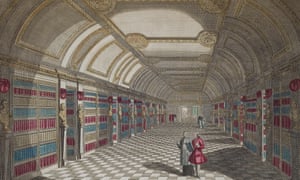 When
I was a young woman, I drew a sort of perverse pride from my willingness to
skip a meal or two in order to afford books. Soon enough, with the ubiquity of
credit card touts on campus, I could buy both books and meals. I justified my
increasing debt as necessary for my education, and joked with friends that
while others spent their money on cars and expensive clothes, anything of value
that I owned was on my bookcases.
When
I was a young woman, I drew a sort of perverse pride from my willingness to
skip a meal or two in order to afford books. Soon enough, with the ubiquity of
credit card touts on campus, I could buy both books and meals. I justified my
increasing debt as necessary for my education, and joked with friends that
while others spent their money on cars and expensive clothes, anything of value
that I owned was on my bookcases.
I
realise now that my “jokes” were, in fact, humblebrags. I did love books,
always had, but I also took a certain arrogant pleasure from owning so many. It
was also when my first “To Be Read” (TBR) pile started – all those volumes I
had bought with the intention of reading them. And while years later, adult
economics has forced me to stop shopping every time I step into a bookstore, my
work as a reviewer now means that an average of five new titles arrive on my
doorstep each week. My TBR pile is ceiling-high, and while I’m not going into
debt, the visceral pleasure that I get from being surrounded by books remains
the same.
In
the 19th century, book collecting became common among gentlemen, mostly in
Britain, and grew into an obsession that one of its participants called
“bibliomania”. Thomas Frognall
Dibdin, an English cleric and bibliographer, wrote Bibliomania, or Book
Madness: A Bibliographical Romance, which was a gentle satire of
those he saw as afflicted with this “neurosis”. Dibdin medicalised the
condition, going so far as to provide a list of
symptoms manifested in the particular types of books that they
obsessively sought: “First editions, true editions, black letter-printed books,
large paper copies; uncut books with edges that are not sheared by binder’s
tools; illustrated copies; unique copies with morocco binding or silk lining;
and copies printed on vellum.”
No comments:
Post a Comment